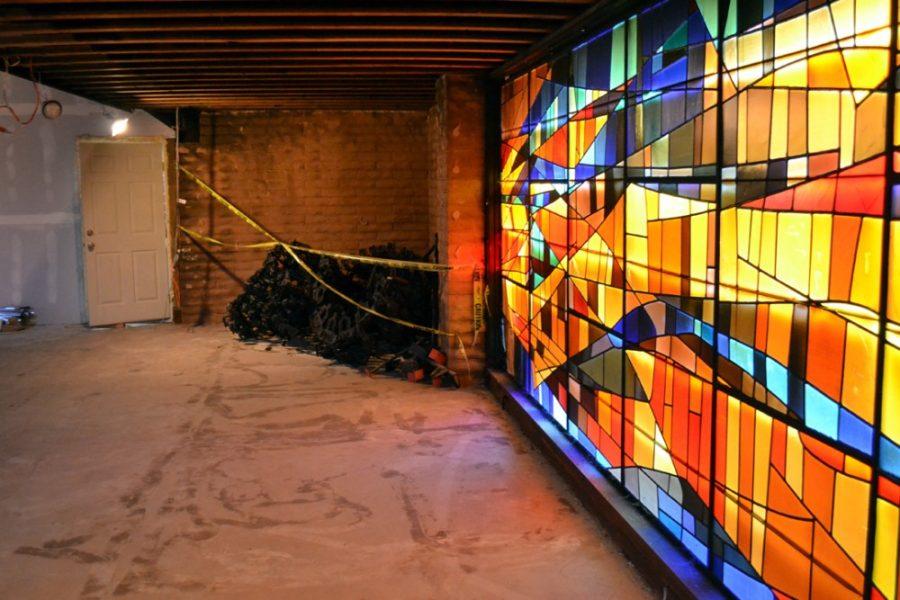Thousands of visitors flowed onto the grounds of St. Demetrios Greek Orthodox Church last weekend during the Tucson Greek Festival. Behind the celebratory food and music of the festival were the remnants of a tragedy that occurred in the church last summer.
“It burned a year ago in May,” said Elizabeth Brollini, president of the Mirofores, St. Demetrios’ myrrh-bearing women. “We had a fire that started at about midnight. It burned for seven minutes and destroyed everything.”
The building committee at St. Demetrios has been working diligently to find new grounds for the construction of a new church, but the prevalence of properties resting on floodplains has hindered progress.
“We have our architect, and we’ve purchased land on River Road,” said Angela Zerdavis, chair of the building committee explained. “Now we’re spending all of our time on hydrology, since it’s in a floodplain.”
With no official projections for construction of the new church, St. Demetrios currently holds its services in the community center, which holds the annual Tucson Greek Festival.
The fire last May reached temperatures of 1,000 degrees Fahrenheit and left the church an utter shell of its former self, according to a presentation at the festival. Despite the destruction, the fire did not destroy everything.
A few artifacts from the church survived, including a sacred version of the 12 gospels, which holds a unique story that was told during the presentation.
On April 27, 1989, during the evening Holy Thursday service, Father Anthony Moschonas finished reading from the fifth gospel. He closed the book and attempted to transfer it from the holy altar while he prepared for the procession depicting Jesus’ crucifixion.
The book, used for countless readings during past Holy Weeks, proved too heavy to be moved.
While Moschonas did not let the book’s unnatural weight trouble him, after the procession, he noticed something miraculous about the book. The cover of the 12 gospels, which depicts the crucifixion and resurrection of Jesus, had changed.
The image of Jesus in the crucifixion had begun to bleed.
Moschonas announced the miracle to the congregation before the service finished and displayed the book for St. Demetrios’ congregation to behold the next day, on Good Friday.
In a 1989 letter to the church’s bishop in San Francisco, Anthony Moschonas wrote, “Fear came all over me … This blood was on the holy icon of Christ, on the right side of [his] body, at the place where [he] was pierced. Some blood also appeared on the left side of [his] chest.”
Since its astonishing change in 1989, the book has been deemed the Bleeding Gospel.
“Hardly anything else survived,” Zerdavis said, commenting on the icon’s survival of the fire. “There’s only a tiny bit of smoke damage along the sides.”
According to Zerdavis, besides the comparatively miniscule amount of damage from the blaze, the book had been tampered with on one other occasion.
“A few years ago, someone broke in and scraped it,” Zerdavis said. “Before that, it glistened and was thick.”
The incident may have tarnished the Bleeding Gospel, but, according to Zerdavis, the book continues to perform its miraculous feat and attracts visitors from around the globe.
“It bleeds at different times, and it continues to bleed,” Zerdavis said.
The Bleeding Gospel survived interventions of notable scale and continues to be preserved at St. Demetrios in the ruins of the former church. As one of the few remaining icons that survived the fire, it holds a position of respect and veneration within the Tucson Greek Orthodox community.
_______________
Follow Ian Martella on Twitter @DailyWildcat









